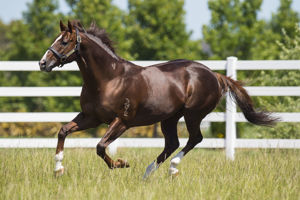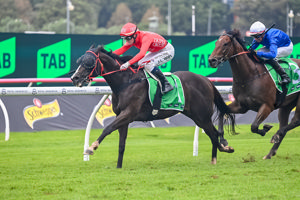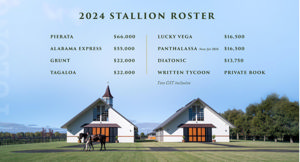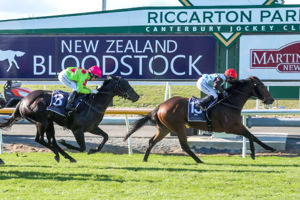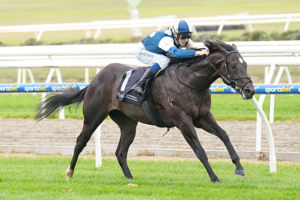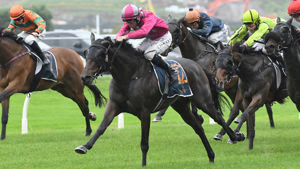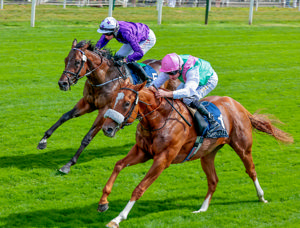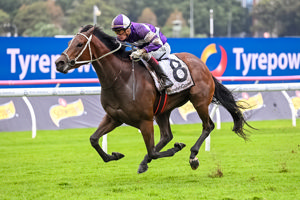For a variety of reasons, the most popular tax structure to run a family horse business is a taxation partnership, often referred to as a ‘mum and dad partnership’.
The reason is not difficult to establish as they are less costly to set up and run and can offer the best tax flexibility for family members involved.
Unlike a company or a trust, partnerships do not require new legal entities or other complicated structures, making it one of the most simple and cost-effective options from a setup perspective. As a result, partnerships are a popular choice of structure for many start-up businesses.
A formal partnership agreement is common (and generally recommended), but it is not essential. Whilst this makes the setup of a partnership even simpler and cheaper, unfortunately, the absence of a partnership agreement can sometimes lead to a lack of evidence in demonstrating the existence of a partnership, especially in the case of ‘mum and dad’ partnerships.
Such was the case in a recent AATA case, Holman v FCT [2020] AATA 1375 (‘Holman’s case’). There has been a decent amount of time until we had such a significant partnership case and I feel obliged to share it with industry, together with tax partnership structure fundamentals.
This article is a little longer than usual, but I felt compelled to share as many facts as possible as this case really highlights the many problematic issues I see in the partnerships I review. I can only hope you find it as interesting and instructive as me!
- When does a ‘mum and dad’ partnership exist?
For income tax purposes, a ‘partnership’ is defined “(a) an association of persons (other than a company or a limited partnership) carrying on a business as partners or in receipt of ordinary income or statutory income jointly; or (b) a limited partnership.”
Ultimately, the question of whether or not a partnership exists is one of fact and there are no statutory rules that determine if the parties are ‘carrying on business as partners’.
Importantly, the onus is on the taxpayers who are claiming that a partnership exists to prove that fact. The ATO takes the view that a mutual assent and intention to act as partners is an essential element in demonstrating the existence of a partnership, which is evidenced by the actual conduct of the parties towards one another (and third parties) during the course of carrying on business. Furthermore, a partnership agreement plays a pivotal role in not only evidencing the existence of the partnership.
ATO has identified nine factors that should be considered. These factors were considered in Holman’s case (refer facts below), where the taxpayer failed in their attempt to argue the existence of a ‘mum and dad’ partnership. Below is a listing of issues to consider when determining if a partnership exists
2.1 ATO partnership factors
The factors are:
- Mutual assent and intention to act as partners
- Joint ownership of business assets
- Registration of business name
- Joint business account and power to operate the account
- Extent to which parties are involved in the conduct of the business
- Extent of capital contributions
- Entitlement to a share of net profits
Each partner should have a right to a share of the net profit or loss of the partnership, which is ideally clearly stated in a partnership agreement.
- Business records
Accounts identifying each partner’s capital contribution, drawings and share of profits should be kept, together with minutes of partnership meetings and memoranda of decisions made. Note – it never ceases to amaze me as to how many partnerships we take over, horse industry or otherwise, that have never had proper financial accounts.
- Trading in joint names and public recognition of the partnership
3.1 Facts of Holman’s case
The facts of the case are summarised as follows:
- In 2011, Mrs Holman registered an ABN and business name for a clothing retail business in her own name as a sole trader.
- In late 2012, Mr Holman requested a private ruling from the ATO as to whether his wife’s retail outlet business was being operated in a partnership with himself. Mr Holman then lodged his 2012 tax return claiming 80% of the loss of the Business as a partnership loss (i.e., prior to receiving the private ruling from the ATO)
- Mr Holman provided the following information to the ATO in his request for a private ruling:
• Mr Holman paid for the Business and whilst Mrs Holman operated the business, he did the accounts and went in once a week to help, mainly on the weekend.
• There was no formal partnership agreement, with the partnership being the subject of an oral agreement between Mr and Mrs Holman, whereby they had agreed on a split of the profit and losses of the Business on an 80/20 basis.
• The rental agreement for the Business was in name of sole trader “Sansisterz Boutique”.
• The Business had a bank account that both Mr and Mrs Holman were able to operate.
• The public liability insurance was in the Business’ name whereas the business insurance was issued in both Mr and Mrs Holman’s names.
- The ATO then issued a private ruling to Mr Holman stating that a partnership did not exist for income tax purposes between Mr and Mrs Holman, based on the following:
• The BASs for the Business were lodged under Mrs Holman’s ABN as a sole trader and there was no record of any partnership tax file number for Mr and Mrs Holman.
• None of the Business’ registrations were consistent with Mr Holman’s assertion of a partnership and no statement was provided by Mrs Holman.
• It is unclear who owned the assets of the Business, including the bank account (as no bank statements were provided) and the Business itself.
• No business records were provided other than two emails from third parties that sometimes contact Mr Holman in relation to matters concerning the Business.
- In May 2018, Mr Holman contacted the ATO explaining that he had sought legal advice to the effect that the Business was being operated as a partnership, resulting in an objection being lodged in November 2018. The ATO disallowed the objection in April 2019.
3.2 AAT’s decision
The main issue before the AAT was whether Mr Holman operated the Business with his wife in partnership and, if so, could claim 80% of the net loss in his tax return.
3.2.1 Intention
It was Mr Holman’s stated belief that it was the couple’s intention to operate the Business in a partnership and he believed that they were, in fact, doing so. However, the Business was commenced by Mrs Holman as a sole trader, which is clearly inconsistent with Mr Holman’s contention that it was a “mutual intention to carry on business together”. Whilst Mrs Holman had said that this was done in error, this ‘error’ was not corrected by either party at any point to include Mr Holman as a partner on official records.
3.2.2. Conduct
In making its decision in Holman’s case, the AAT considered each of the eight factors identified by the ATO in its tax relevant tax ruling.
- Joint ownership of business assets. Mr Holman did not provide any evidence to the AAT in relation to the ownership of the Business’ assets to support the conclusion of joint ownership.
- Registration of business name. The business name, “Sansisterz Boutique”, was registered solely in Mrs Holman’s name.
- Joint business account and power to operate the account. Mrs Holman is shown as the ‘owner’ of the Business’ bank account, with Mr Holman simply authorised as a ‘user’ of the account. In addition, under the question of ‘Position Held’ on the bank account application form, Mr Holman indicated that he was the ‘Accountant’ (rather than an owner or a partner). No bank statements were provided to the AAT and there was no evidence that the bank considered the Business was being operated in partnership.
- Extent to which parties are involved in the conduct of the business. Mr Holman had asserted that whilst his wife operated the business, he did all the paperwork and looked after the accounts of the Business. Mrs Holman also indicated that her husband was involved in the Business and had invested both money and time in the Business. Despite accepting that Mr Holman had contributed to the Business, particularly as the ‘accounts manager’, the AAT was not persuaded that this was sufficient to establish him as a partner of the Business.
TAX WARNING – Extent of spouse’s ‘involvement’ in the business
There is a general presumption that family members (particularly spouses) will assist each other in the running of their businesses. This, in and of itself, will not amount to the business being operated in a ‘partnership’ for tax purposes. For situations involving husband and wife, the conduct of each party must be closely examined to determine if it is part of their ‘ordinary domestic relationship’ or part of a ‘business association’. In fact, the Courts have been wary of treating a spouse’s role as indicative of the existence of a partnership, rather, it is more generally seen as a normal incident flowing from the ordinary family relationship of husband and wife.
Thus, in a horse partnership, the ATO will expect the spouse to be involved in the direct operations of the business not just, say, the bookwork.
- Extent of capital contributions. Although Mr Holman claimed that he provided the original funds to purchase the Business, he failed to provide any records to substantiate this.
- Entitlement to a share of net profits. It was contended by Mr Holman that the parties had an agreement to share the profits and losses on an 80/20 basis to reflect his capital contributions, however, there was no evidence that the profits and losses were actually shared. For instance, on a credit application that was signed by Mr Holman, the Business structure was shown as a ‘sole trader’, with Mr Holman being named as the accounts contact person.
The AAT commented that if a business was being conducted as a partnership, then it would be expected that various registrations (e.g., ABN, BAS, income tax return, business name, etc.) would be in the partners’ joint names – which was not the case here, where all of these registrations were solely in Mrs Holman’s name only.
Please don’t hesitate to contact the writer if you wish for me to clarify or expand on any of the matters raised in this article.
PAUL CARRAZZO CA
CARRAZZO CONSULTING PTY LTD
801 Glenferrie Road, Hawthorn, VIC, 3122
TEL: (03) 9982 1000
FAX: (03) 9329 8355
MOB: 0417 549 347
E-mail: paul.carrazzo@carrazzo.com.au
Web: www.carrazzo.com.au

